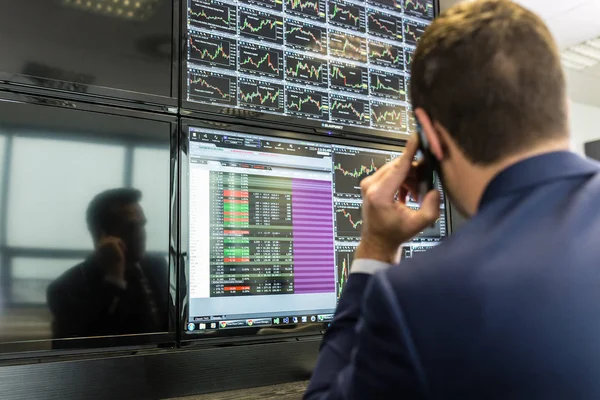Predicting where APT’s price will land in 2026 isn’t just a guessing game—it’s a fascinating look into the future of one of crypto’s most talked-about projects. With the digital asset landscape shifting so quickly, I know how important it is to stay ahead of the trends and understand what might drive APT’s value in the years to come.
I’ve seen how market sentiment, technology upgrades, and broader adoption can turn the tide for any coin. That’s why I’m diving deep into the factors that could shape APT’s price by 2026. Whether you’re a seasoned investor or just curious about what’s next for Aptos, I’ll break down what you need to know to make sense of the predictions.
Overview of APT and Its Market Performance
APT, the native token of the Aptos blockchain, drives transaction fees and decentralized application (dApp) utility across the network. Launched in October 2022, APT built momentum quickly due to its focus on scalability, security, and Move-based programming. Within six months, APT’s market capitalization exceeded $2 billion, reflecting strong developer interest and rising transaction volumes.
Daily trading volumes for APT often range between $100 million and $500 million on exchanges like Binance, Coinbase, and KuCoin based on CoinMarketCap data from May 2024. The token’s circulating supply increased gradually, mirroring growing project adoption and protocol releases.
Licensing partnerships, ecosystem grants, and DeFi integrations advanced APT’s use cases during 2023-2024. When Aptos integrated support for NFT transactions and expanded gaming partnerships, token demand grew, impacting short-term price moves.
The table below summarizes APT’s historical price performance and major market indicators:
| Metric | Nov 2022 | May 2023 | May 2024 |
|---|---|---|---|
| Price (USD) | $7.10 | $8.90 | $9.65 |
| Market Cap (USD) | $1.4 Billion | $1.9 Billion | $2.7 Billion |
| Circulating Supply (APT) | 197 Million | 220 Million | 280 Million |
| 24h Trading Volume (USD) | $110 Million | $320 Million | $210 Million |
If the ecosystem sustains progressive integrations and broadens utility, APT’s market performance may trend stronger across investment and on-chain activities.
Key Factors Influencing APT Price in 2026
Several key factors are shaping APT’s trajectory in 2026. Each dynamic element influences demand, adoption and volatility in the Aptos (APT) token market.
Technological Developments and Upgrades
Continuous improvements in Aptos’s technology drive APT adoption. Enhancements in transaction speed, scalability and blockchain security attract new users and developers. Major protocol upgrades—such as improved smart contract infrastructure or seamless NFT integrations—expand use cases and promote ecosystem growth. Expansion into decentralized finance (DeFi) and broader integrations, such as gaming or NFT platforms, add value that supports price stability and upward movement. Sustained innovation increases market competitiveness against rivals like Ethereum and Solana.
Market Sentiment and Investor Behavior
Market sentiment and trading patterns influence APT’s price direction. Positive events, such as high-profile partnerships or integrations, typically boost investor confidence and attract new buyers. Broader market trends in cryptocurrencies, especially Bitcoin price movements, often cause notable fluctuations. Instances of increased trading volume, like during major network launches or market rallies, have historically correlated with temporary price spikes. Periods of uncertainty—triggered by global economic conditions or project-specific concerns—can lead to reductions in demand and short-term price corrections.
Major APT-Related Sentiment Events (2023–2024)
| Date | Event | Market Response |
|---|---|---|
| Q1 2023 | NFT ecosystem launch | Trading volume surge |
| Q3 2023 | New gaming partnerships | Price climb observed |
| Q2 2024 | DeFi protocol integration | Adoption increase |
Regulatory Changes and Their Impact
Cryptocurrency regulation exerts a powerful effect on APT price dynamics. Favorable policies—such as clarity in digital asset classification and tax incentives—often boost adoption by lowering entry barriers for institutional and retail investors. Restrictive measures, including outright bans or onerous compliance requirements, can suppress demand by reducing exchange listings and investor participation. Regional variations, such as more open frameworks in APAC compared to US restrictions, create diverse opportunities and risks across APT markets.
Potential Regulatory Impacts on APT Price (2026)
| Regulatory Scenario | Expected Price Effect |
|---|---|
| Positive clarity | Upward drive |
| Restrictive measures | Downward pressure |
| Taxation policy changes | Volatility increase |
Historical Price Trends and Patterns
APT’s historical price trends since its launch in October 2022 show early market volatility, followed by phases of stabilization. Initial price swings were marked by speculative trading and rapid adoption, with daily trading volumes reaching up to $500 million in the first few months. By the end of 2023, consistent protocol updates and DeFi integrations helped APT achieve steadier price action and decreased volatility.
Market indicators like RSI and MACD showed occasional overbought conditions during major ecosystem announcements or NFT integrations. However, after each surge, retracement to technical support levels, such as Fibonacci retracement zones between $7 and $10, reflected buyers’ caution and profit-taking behavior.
Yearly average prices from multiple sources affirm a pattern of gradual increase over time. For example, after surpassing the $2 billion market cap, APT maintained healthy liquidity and stronger support ranges compared to launch levels. Analyst models incorporate both technical signals and manual reviews, showing that periods of ecosystem expansion align with more bullish momentum, while regulatory concerns or broader crypto downturns temper gains.
| Year | Average Price (USD) | Major Catalysts | Typical Daily Volume (USD) |
|---|---|---|---|
| 2022 | $8.12 | Launch, Speculation, Early Listings | $100M–$300M |
| 2023 | $9.87 | DeFi Integrations, NFT Partnerships | $150M–$400M |
| 2024 | $11.33 | Stable Ecosystem Growth, Protocol Upgrades | $200M–$500M |
In 2025 and 2026, predictions model moderate but steady growth. Most sources forecast APT prices stabilizing between $11 and $19, linked to ongoing technology enhancements and expanded dApp adoption. Historical data supports this outlook, as periods of network and use-case growth have consistently driven price recoveries and upward trends.
| Source | 2026 Price Prediction (USD) |
|---|---|
| Cryptopolitan | $15.54 (EoY 2025, moderate growth into 2026) |
| Digitalcoinprice | $15.23 |
| Coincodex | $11.95 |
| Gate.io | $7.49 |
| Coinlore | $11.47–$12.47 |
| Mitrade | $15.89–$19.13 |
Each price cycle has reinforced underlying demand as APT’s protocol matures. When ecosystem advancements coincide with strong developer activity and increased transaction volumes, prices trend toward higher support levels, reflecting both market confidence and utility-driven momentum.
Expert Opinions and Forecasts for APT Price in 2026

Expert-Opinions-and-Forecasts-for-APT-Price-in-2026
Expert analysts predict a moderate rise in APT’s price compared to previous years, with most 2026 projections falling between $7.5 and $15.2. These estimates reflect ongoing optimism but account for volatile market dynamics and shifting investor sentiment.
2026 APT Price Forecast Table
| Source | Average Price Prediction (2026) | Notes |
|---|---|---|
| Digitalcoinprice | $15.23 | Higher-end forecast citing potential adoption growth |
| Gate.io | $7.49 | Lower range based on conservative market scenarios |
| Coincodex | $11.95 | Reflects caution due to comparison with 2025 highs |
| Cryptopolitan | ~$15.54 (2025 high) | Projects climb toward higher levels after 2025 |
Digitalcoinprice estimates APT could average around $15.23 in 2026 if adoption picks up and crypto market momentum remains steady. Gate.io, on the conservative end, sees APT closer to $7.49, factoring in potential bearish trends or broader market corrections. Coincodex forecasts approximately $11.95 for 2026, suggesting only a moderate increase from prior year highs, aligning closely with longer-term stabilization scenarios.
Industry consensus leans toward cautious optimism, projecting steady—though not excessive—growth for APT through 2026. Each prediction incorporates variables like protocol upgrades, NFT and gaming partnerships, and DeFi ecosystem expansion. Broader crypto market trends and macroeconomic factors also contribute to the expected price range.
Analysts emphasize that unpredictable external events and regulatory developments could drive volatility, making precise forecasting challenging. Most credible models avoid predicting prices above $20 in 2026, highlighting the sector’s measured sentiment toward Aptos’s medium-term prospects.
Potential Risks and Challenges for APT

Potential-Risks-and-Challenges-for-APT
Market volatility introduces price swings for APT, causing values to react quickly to sentiment shifts and economic developments. Major cryptocurrencies like Bitcoin and Ethereum consistently influence Aptos’s price trend during broad sell-offs or rally periods.
Competition presents major hurdles for Aptos, as networks like Ethereum and Solana draw developer resources or user capital away from the Aptos ecosystem. Layer-1 rivalry affects ecosystem growth and dApp integration, which in turn shapes APT demand.
Technological risks remain significant, as any critical bugs or security vulnerabilities could erode trust in Aptos’s protocol and reduce adoption from both users and partners. Consistent protocol upgrades and extensive security audits mitigate these operational risks but don’t eliminate them.
The regulatory environment shapes APT’s liquidity and trading access, especially when regulatory bodies propose stricter rules for token issuance, exchange listing, or DeFi participation. Unfavorable regulation in key markets like the US, EU, or Asia can affect capital inflows, while supportive policy enables greater adoption through institutional involvement.
Adoption and ecosystem growth drive token usage, so developer inactivity, lack of high-profile partnerships, or dApp delays constrain APT’s long-term value. Accelerated adoption, demonstrated through NFT launches, DeFi innovation, or gaming partnerships, enhances sentiment and network effect.
Market maturity plays a pivotal role, as speculative interest remains high across crypto assets. A downturn in risk appetite or global macroeconomic stress decreases liquidity and trading volume, pressuring APT’s support zones.
APT 2026 Risk & Challenge Overview
| Risk/Challenge | Impact Area | Example | Potential Effect on Price |
|---|---|---|---|
| Market Volatility | Daily Price Action | Crypto sell-off events | High short-term fluctuation |
| Competition | Ecosystem Growth | Ethereum, Solana innovations | Limited user acquisition |
| Tech Risks | Blockchain Security | Protocol bug/exploit | Loss of confidence |
| Regulation | Exchange/Token Access | US SEC classification changes | Reduced trading access |
| Ecosystem Growth | Adoption/Partnerships | Fewer NFT or gaming integrations | Slower appreciation |
| Market Maturity | Investor Sentiment | Global recession | Persistent sell pressure |
Uncertainty dominates these vectors, so ongoing risk monitoring remains crucial when evaluating APT’s projected 2026 price boundaries.
Conclusion
As I look ahead to 2026, I see APT’s journey as one shaped by innovation, strategic partnerships, and the ever-evolving crypto landscape. The potential for growth remains strong, especially as the Aptos ecosystem continues to attract new users and developers.
While predictions offer useful guidance, I always keep in mind that the crypto market’s unpredictable nature means surprises can happen. Staying informed and adaptable is key for anyone considering APT as part of their investment strategy.
Frequently Asked Questions
What is APT and what is its main use on the Aptos blockchain?
APT is the native cryptocurrency of the Aptos blockchain. It is primarily used for paying transaction fees, powering decentralized applications (dApps), and supporting various ecosystem utilities such as NFT transactions and gaming partnerships.
How has APT performed in the market since its launch?
Since its launch in October 2022, APT has shown strong growth, with its market capitalization surpassing $2 billion within six months. Daily trading volumes typically range from $100 million to $500 million, supported by growing developer activity and protocol upgrades.
What factors could influence APT’s price by 2026?
Key factors include technological advancements on the Aptos blockchain, broader adoption of dApps, market sentiment, major partnerships, and regulatory developments. Improvements in blockchain speed and security, as well as new use cases, can support price growth.
What are expert price predictions for APT in 2026?
Analyst forecasts for APT’s price in 2026 range from $7.49 to $15.54. Digitalcoinprice estimates an average of $15.23, Gate.io projects $7.49, and Coincodex foresees about $11.95, reflecting general optimism for steady progress.
How do regulatory changes affect APT’s price?
Regulatory clarity can have a positive impact on APT’s adoption and price, while restrictive regulations may reduce demand and limit trading. The Aptos ecosystem’s ability to adapt to evolving regulations is crucial for its long-term growth.
What are the main risks and challenges facing APT?
Major risks include high market volatility, competition from blockchains like Ethereum and Solana, potential security vulnerabilities, and unpredictable regulatory changes. The pace of ecosystem growth and ongoing risk monitoring are vital to managing these challenges.
Can external events cause sudden volatility in APT’s price?
Yes, significant events such as new partnerships, regulatory news, or broader crypto market shifts can cause rapid price changes for APT. This uncertainty makes precise long-term price forecasting difficult.
Why is monitoring technological upgrades important for APT investors?
Technological upgrades, such as enhancements in transaction speed and security, often lead to increased adoption and use cases. Staying updated helps investors understand potential price catalysts and future growth opportunities.
How important is ecosystem growth for APT’s future value?
Ecosystem growth is crucial for APT’s value. The expansion of dApps, NFT transactions, DeFi integrations, and gaming partnerships all contribute to higher demand and potentially more stable price support in the long term.
Is APT a good investment for newcomers to cryptocurrency?
APT offers growth potential thanks to its active development and expanding ecosystem. However, like all cryptocurrencies, it carries risks due to volatility and regulatory uncertainty. New investors should research thoroughly and consider their risk tolerance before investing.

